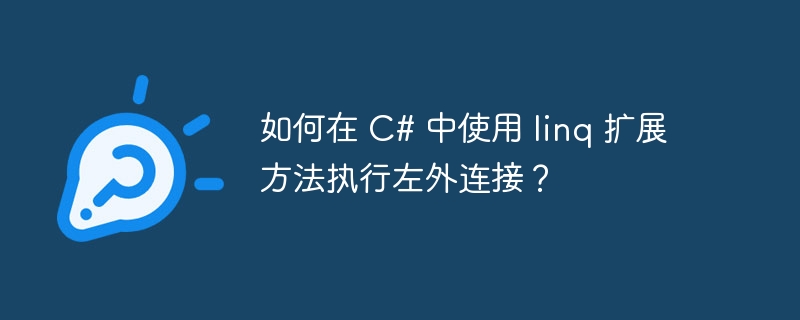
使用INNER JOIN时,结果集中仅包含匹配的元素。不匹配的元素将从结果集中排除。
使用LEFT OUTER JOIN时,所有匹配元素 + 左侧集合中的所有不匹配元素都将包含在结果集中.
让我们通过一个示例来了解左外连接的实现。考虑以下 Department 和 Employee 类。请注意,员工 Mary 没有分配部门。内连接不会将她的记录包含在结果集中,而左外连接则会将她的记录包含在内。
static class Program{
static void Main(string[] args){
var result = Employee.GetAllEmployees()
.GroupJoin(Department.GetAllDepartments(),
e => e.DepartmentID,
d => d.ID,
(emp, depts) => new { emp, depts })
.SelectMany(z => z.depts.DefaultIfEmpty(),
(a, b) => new{
EmployeeName = a.emp.Name,
DepartmentName = b == null ? "No Department" : b.Name
});
foreach (var v in result){
Console.WriteLine(" " + v.EmployeeName + "\t" + v.DepartmentName);
}
}
}
public class Department{
public int ID { get; set; }
public string Name { get; set; }
public static List<Department> GetAllDepartments(){
return new List<Department>(){
new Department { ID = 1, Name = "IT"},
new Department { ID = 2, Name = "HR"},
};
}
}
public class Employee{
public int ID { get; set; }
public string Name { get; set; }
public int DepartmentID { get; set; }
public static List<Employee> GetAllEmployees(){
return new List<Employee>(){
new Employee { ID = 1, Name = "Mark", DepartmentID = 1 },
new Employee { ID = 2, Name = "Steve", DepartmentID = 2 },
new Employee { ID = 3, Name = "Ben", DepartmentID = 1 },
new Employee { ID = 4, Name = "Philip", DepartmentID = 1 },
new Employee { ID = 5, Name = "Mary" }
};
}
}以上是如何在 C# 中使用 linq 扩展方法执行左外连接?的详细内容。更多信息请关注PHP中文网其他相关文章!




